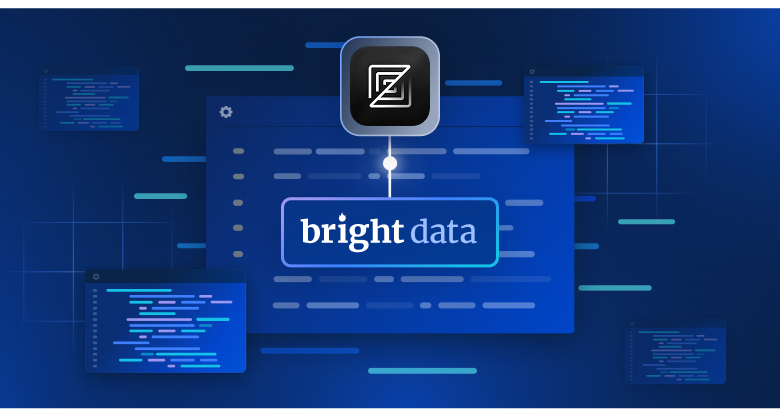In this article we will cover:
- What are NFTs and GANs
- Data’s role in creating a GAN
- A tutorial on how companies can practically collect data for a GAN project
- How GANs can generate value for businesses
What are NFTs and GANs
When most people think of Non-fungible Tokens (NFTs), they typically think of art, which has become a popular application of NFT technology. To simplify, NFT is a blockchain-based system that enables individuals or companies to register ownership of a unique digital item, such as music, code, and art.
If we focus on ‘art’ for a moment, some people might be familiar with The Bored Ape Yacht Club, which is a project that created 10,000 pieces of unique digital artwork.
These apes may seem like a joke to some, but in real economic terms, the entire collection of Bored Apes is worth north of $1 billion – with some individual apes retailing for $2 or even $3 million.
This entire series of events, in and of itself, is fascinating, but the story does not end there. A group of people who saw the Bored Ape project decided to use Generative Adversarial Networks (GANs) technology in order to create their own take on this ‘limited edition’ project.
GANs, in layman’s terms, is basically a Machine Learning (ML) algorithm that can be trained with data so that the model can then create/generate output that is unsupervised by humans. In this case scenario, the GAN Bored Ape series was born:

At first, this created a secondary market for those who wanted in on the action but did not have $2 million to spend on an original Bored Ape. And with time, this secondary market developed into a market in its own right.
Data’s role in creating a GAN
GANs are built using a two component architecture that consists of a ‘Generator’, and a ‘Discriminator’. The Generator creates new data, such as images or text, based on the ‘training data’ that is fed to the algorithm. The Discriminator is tasked with differentiating between the newly artificially generated datasets and the original data. The Discriminator only ‘approves’ the datasets that match the real world data to a high enough degree. This means that collecting high quality, accurate data is of the utmost importance when attempting to create/train a GAN that will be able to generate high value output.
A tutorial on how companies can practically collect data for a GAN project
The CTO of Amazon, Werner Vogels tweeted: “BTW this excellent work was done by @ykilcher Watch his video if you want to get the details on the data collection and the generation of the GAN.”
How GANs can drive value for businesses
On the surface, this may seem like a very isolated development relevant only to those deeply involved in the blockchain, crypto, and NFT art trading markets. But this is a misconception.
Machine Learning GAN technology has the potential to revolutionize the course of corporate ideation workflows – from entire business concepts down to products and lines of code.
The spectrum of live GAN domains currently in existence is pretty wide. There are individuals leveraging this technology to train algorithmic output, things verging on the ridiculous such as thiscatdoesnotexist.com.
While on the other end of the spectrum, you can start seeing examples that begin hinting at business capabilities that, when properly applied, could really transform an entire industry.
Changing the ways in which new ideas, songs, content, graphics, art, and scientific breakthroughs are created and achieved.
Here are but a few examples to help stimulate an understanding of the opportunities at hand:
- Thisstartupdoesnotexist.com -> Can aid entrepreneurs in coming across new ideas by cross-referencing millions of data points. The algorithm can account for which startups already exist while simultaneously identifying new markets and pain points that require a new solution/tool.
- Thissneakerdoesnotexist.com -> Can help fashion brands come up with infinitely unique product designs. Setting their brand a step above the competition and empowering them to grab increased market share while also reducing the time from ideation to production.
- Thischemicaldoesnotexist.com -> Can help scientists engineer new synthetic chemicals that can change the way items are produced, packaged, stored, and shipped. Previous examples of synthetic materials that revolutionized entire industries and production cycles include ‘plastic polymers’ and ‘polystyrene foams’ (better known as ‘Styrofoam’).

The bottom line
GAN interpolation modeling has come a long way since its inception when it could just barely generate numbers and images recognizable to the human eye. As demonstrated by one of the first academic papers to be written on the subject in 2014, ‘Generative Adversarial Nets’ by Ian J. Goodfellow:

Since then, GAN Machine Learning technology has come a long way. Though admittedly, it has yet to be perfected. Companies who choose to become early adopters can task their DevOps teams with ingesting open-source web data and creating independent GAN models in their respective industries. These players stand to become market leaders in their fields both in terms of generating ideas that no human mind has ideated before, as well as standing out by employing future-facing technologies.








